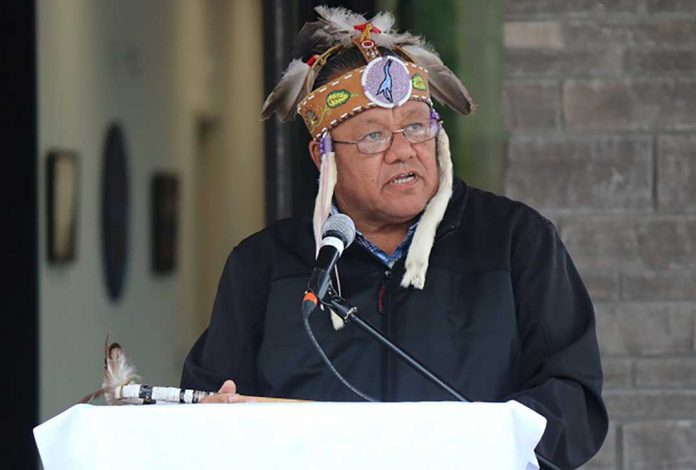WIIKWEMKOONG—Theodore Flamand didn’t expect such a big response when he posted about a potential Manitoulin Island-wide turtle conservation project. “Being there was a great interest in turtles over the spring and summer of 2022,” he wrote, “How would you feel about an Island-wide turtle conservation project?”
“I didn’t think this was going to go anywhere,” Mr. Flamand said. “I thought I’d get a few responses and that’s about it.” There were about 150 responses saying it was a good idea.
Mr. Flamand is species-at-risk coordinator with Wiikwemkoong’s Lands and Resources Department. He realized his vision for an outdoor learning environment in his community with the completion of the Prairie Point Marsh Trail in 2021.
The area is home to numerous species and plants, including the at risk Gattinger’s agalinis, a delicate pink flower only found at Prairie Point, as well as wolves, snakes and turtles. Mr. Flamand and his crew have documented Blanding’s turtles as well as painted, map and snapping turtles, which are all listed as endangered, threatened or at risk in Ontario.
This summer, a teaching lodge was erected at the marsh. Between the viewing platform and the teaching lodge is a sandy area enclosed by a large chicken wire box. The sand was brought in to create a good, safe place for turtles to nest.
What would a turtle conservation project look like? Mr. Flamand noted it would be community driven but he could “do the leg work.” The project would raise awareness, provide hands-on learning experiences for children and youth, while protecting and monitoring nesting sites and habitat. “That’s what my thought was, people going out and trying their best to protect turtles,” he said.
Building nesting boxes, creating wildlife crossings and erecting fencing could be part of the project. In fact, Wiikwemkoong does have turtle fences erected in some areas. One of the major threats to adult turtles is being hit by cars as they cross roads to their nesting sites. Other threats include habitat loss and predators.
One turtle conservation project at Algonquin Provincial Park uses artificial nesting mounds made of sand and gravel, similar to the nesting box at Prairie Point, to mimic the natural nesting habitat chosen by turtles. This provides adult turtles with a secure place to lay their eggs and helps to reduce predation and hatchling mortality.
Researchers currently with Dr. Patricia Chow-Fraser’s lab at McMaster University are studying a population of Blanding’s turtles in the McGregor Bay area, teaching volunteers from Whitefish River First Nation and McGregor Bay Association so they can carry on monitoring and stewardship activities once the project is complete.
Understanding the habits and habitats of the Island’s turtle populations will enable communities to monitor their health and safety, especially in a changing climate.
“There was a lot of interest in the spring when the turtles were moving,” Mr. Flamand said. “That’s exactly why I posted that. We can do something over the winter. We have something like five or six months to come up with a plan.”
Mr. Flamand is willing to facilitate that working group and can be reached by email at theodoreflamand@wiikwemkoong.ca or by phone at 249-878-1706.





